Football
Film Study: Why Baylor’s Offense is So Tough to Stop
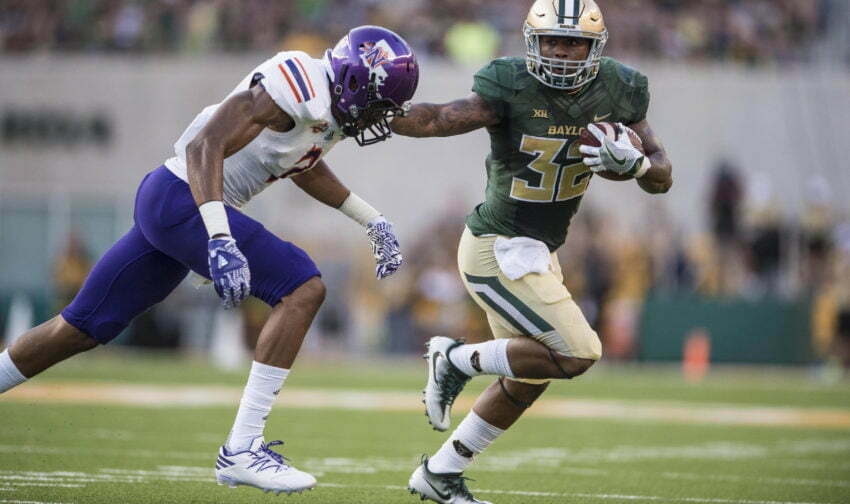
The Oklahoma State Cowboys will have their hands full trying to defend against the Baylor Bears this Saturday in Waco. The Bears have one of the most explosive offenses in the nation and are consistently one of the best teams at both running and passing the ball.
But their strength lies in how they use both the run and pass at the same time. The Bears were one of the first teams to build an entire offense off of RPOs, or run-pass options. Run-pass options attach routes onto run plays, thus giving the quarterback the option to either run or pass the ball. Let’s take a look at the RPO in its most elemental form.
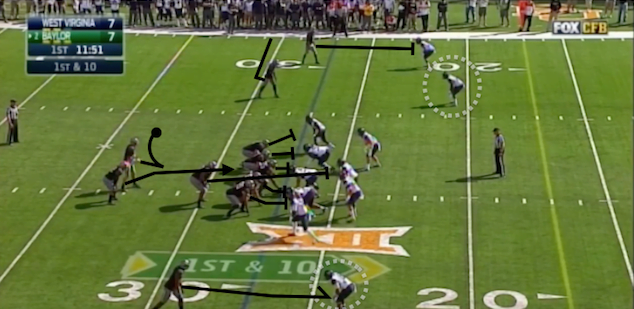
Baylor’s most basic RPO includes some form of inside run play, in this case an iso run, and two separate route attachments. The first is on the twin side, where the inside receiver is running a bubble route; and the second on the isolated side, where the receiver is running a basic stem or ‘gift’ route (runs curl against off-coverage, fade against press).
This Bears can tear up a defense with this one play; it’s really difficult to stop it because the play has built-in counters for any possible coverage. If the defense plays base nickel, the offense has a numbers advantage in the box (six-on-six) and can either run the ball or throw to the isolated receiver (in man-off). If the defense brings in the nickel back for run support, the slot receiver is uncovered. And if the offense plays press and brings down a safety for run support, the single-side receiver is left one-on-one on a fade.
So when the box isn’t crowded, watch for Baylor to run the ball.

And when the defense leaves a receiver uncovered, expect Baylor to find a way to get the ball to him, either on the strong side:
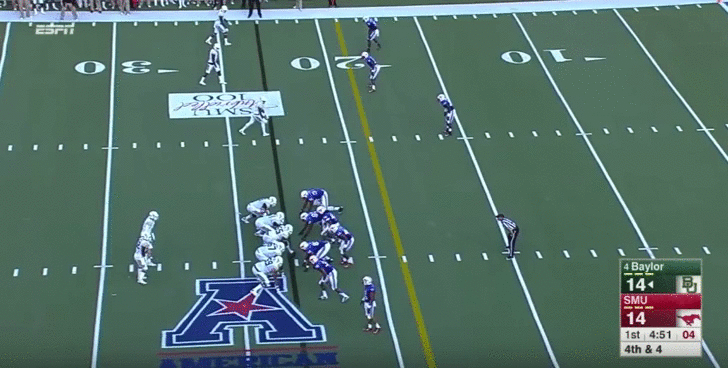
Or on the isolated side:
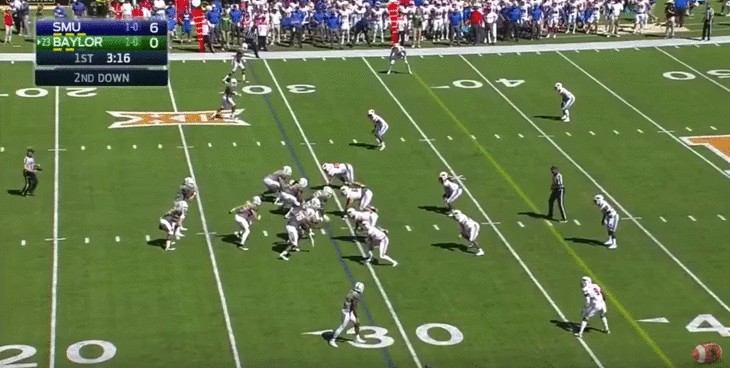
And their RPOs get really dangerous when they tag a downfield route onto their run plays. Take their post attachment, for example, where the quarterback reads the play-side safety and reacts accordingly.
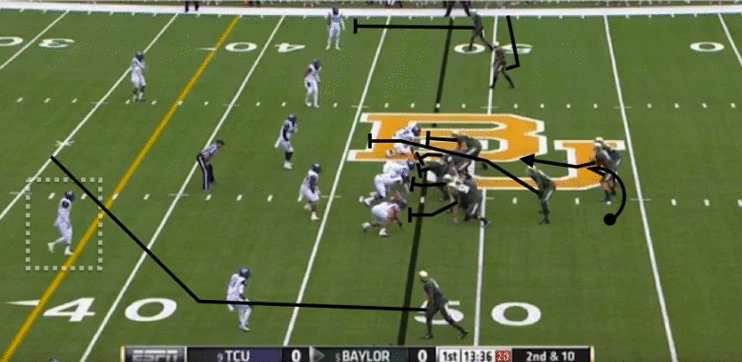
Just this one aspect of Baylor’s offense is so dangerous, and it’s even harder to defend because they run RPOs about 70 percent of the time. And don’t forget that the other 30 percent is their downfield passing game, and, while it’s simplistic, it’s quite possibly more dangerous than their RPOs.
“It’s a whole different animal to try to get your guys off the field,” said Glenn Spencer this week. “And that is the key, this is one of the highest scoring offenses in the past five years in the nation, so we have to do a good job of trying to steal a possession here and there, and if we play 18-20 possessions against them, we have to get a number of stops. They’re going to make their big plays. To think we’ll stop them from making some big plays here and there is unrealistic. It’s the goal, but you can’t get totally frustrated if that happens. You just have to steal some possessions for your offense and hope to put up some points with them.”
If OSU wants to beat Baylor, they have to stop the run with only their front seven (and in many cases, front six). Blitzing is not effective in stopping this style of offense and bringing an extra man in the box is asking for trouble. Stop the run and successfully defend in one-on-one coverage on the outside. It’s easy in practice, but as we learned last year (even against a third-string QB), it’s much easier said than done.
How do you think the Cowboy defense will perform this weekend? Leave your opinions below in the comments!

-

 Football4 days ago
Football4 days agoFour-Star Quarterback Adam Schobel Commits to Oklahoma State, Flips from Baylor
-
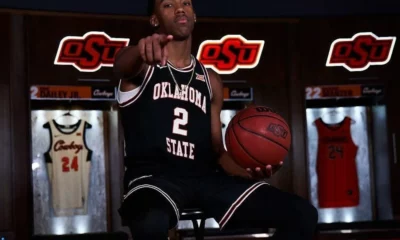
 Hoops4 days ago
Hoops4 days agoFour-Star Signee Jeremiah Johnson Reaffirms Commitment to Oklahoma State after Coaching Change
-

 Hoops4 days ago
Hoops4 days ago‘Keep Turning Over the Rocks’: Looking at the Portal Landscape as Lutz Looks to Solidify His First OSU Roster
-
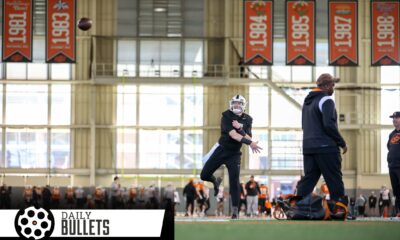
 Daily Bullets4 days ago
Daily Bullets4 days agoDaily Bullets (Apr. 23): Pokes Land Four-Star Quarterback, Retain Talent from Mike Boynton Era






